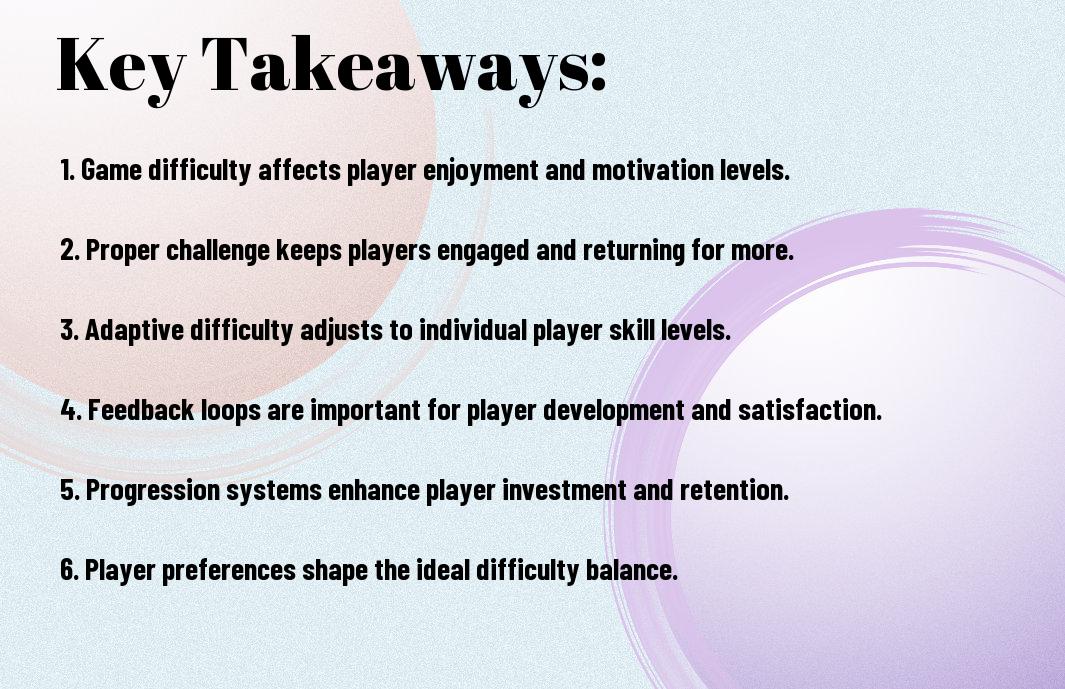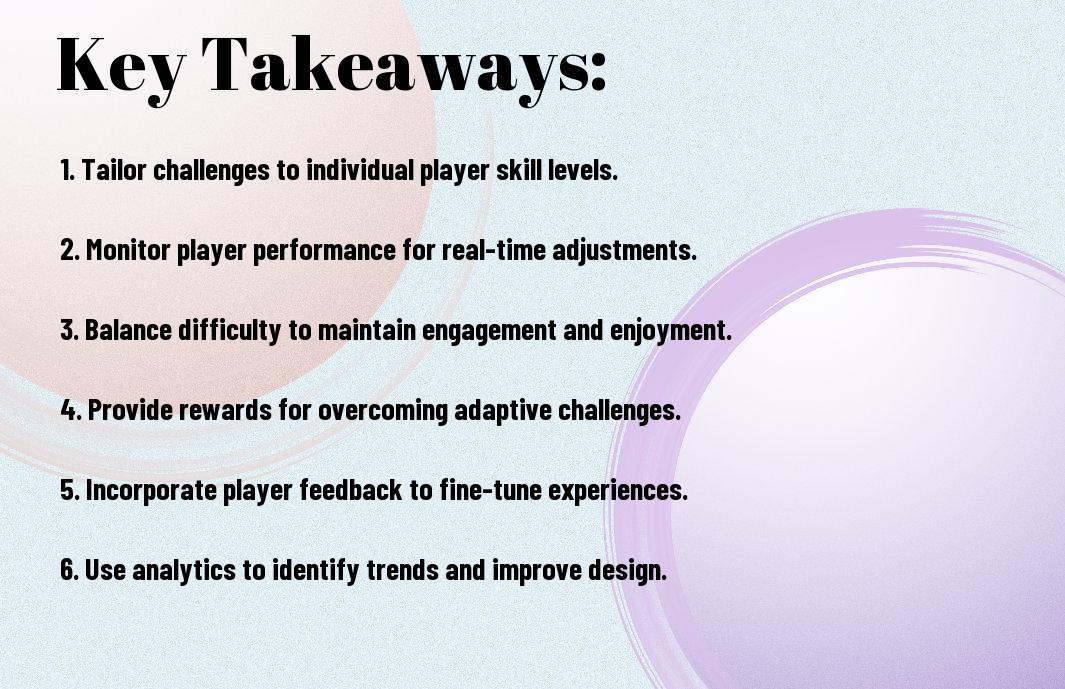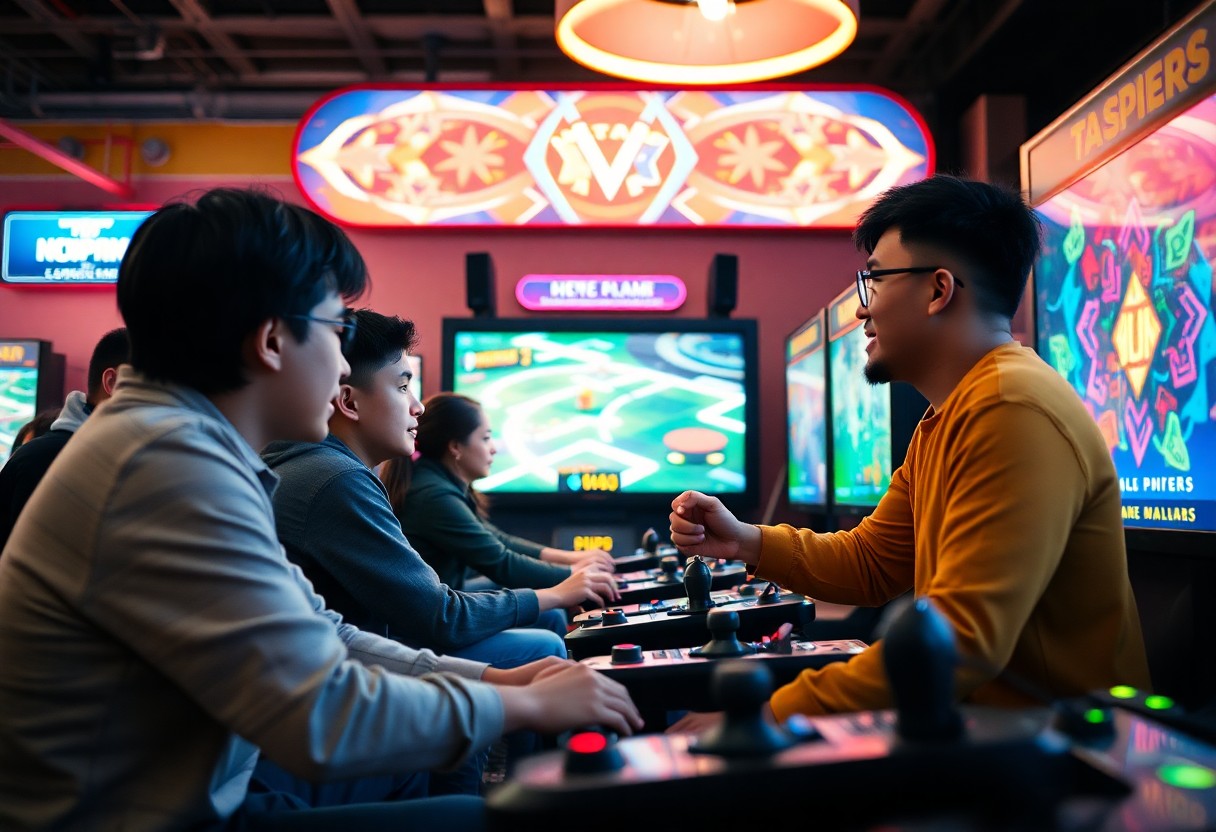As you probe into the world of gaming, you’ll notice that your engagement is heavily influenced by the level of difficulty. You’ll find yourself fully immersed in a game that challenges you just enough, but not so much that it becomes frustrating. Your experience is shaped by the delicate balance between difficulty and engagement, and understanding this balance is key to creating an enjoyable gaming experience. You’ll explore this concept further, discovering how game developers use science to craft the perfect balance.

Key Takeaways:
- Game difficulty plays a significant role in player engagement, as it can either motivate or frustrate players, depending on the level of challenge presented.
- A well-designed difficulty curve can help to maintain player interest and satisfaction by providing an optimal level of challenge that is neither too easy nor too hard.
- Player engagement is closely tied to the concept of flow, which refers to a state of complete absorption and immersion in the game, where players are fully focused and motivated.
- The ideal difficulty level can vary from player to player, and game designers should strive to create adaptive difficulty systems that adjust to individual player skills and preferences.
- Too much difficulty can lead to player frustration and disengagement, while too little difficulty can result in boredom and a lack of challenge, highlighting the need for a delicate balance.
- Game designers can use various techniques, such as level design, enemy AI, and player progression, to create a balanced and engaging difficulty curve that caters to different player types.
- Understanding player psychology and behavior is vital for creating an effective difficulty curve, as it allows game designers to anticipate and respond to player needs, preferences, and emotions.
Core Elements of Game Difficulty
Before venturing into the intricacies of game difficulty, you need to understand its core components. You will find that difficulty is a delicate balance of challenge, progression, and player assessment, all working together to create an engaging experience.
Challenge Curves and Progression
On the surface, challenge curves and progression seem straightforward, but as you research deeper, you will discover that they require careful calibration to keep players invested in your game, with challenges that are neither too easy nor too hard.
Player Skill Assessment Systems
Systems like leaderboards and skill ratings help you gauge your players’ abilities, allowing you to adjust the difficulty accordingly, ensuring that your players stay engaged and motivated to improve their skills.
The player skill assessment systems are designed to evaluate your performance, providing feedback that helps you identify areas for improvement, and as you progress, these systems adapt to your growing skills, presenting new challenges that test your abilities, keeping the game exciting and rewarding, and encouraging you to continue playing and improving.

Psychology of Player Engagement
While understanding the psychology behind player engagement is vital, you’ll find that it’s a complex mix of factors that contribute to an immersive experience. Your perception of challenge, skill, and reward all play a role in determining your level of engagement.
Flow State and Optimal Challenge
Optimally, you’ll experience a state of complete absorption when the challenge matches your skill level, creating an engaging and enjoyable experience. Your focus is heightened, and you’re fully invested in the game, making it an ideal state for learning and improvement.
Reward-Difficulty Balance
Against the backdrop of an engaging game, you’ll notice that the balance between reward and difficulty is delicate. You need to feel a sense of accomplishment when overcoming challenges, and the rewards should be proportional to the effort you’ve put in.
Further, as you progress through a game, you’ll find that the reward-difficulty balance can make or break your experience. If the rewards are too scarce or the challenges too daunting, you may become frustrated and disengage. On the other hand, if the rewards are too plentiful or the challenges too easy, you may become bored and lose interest. You’ll need to find a balance that keeps you motivated and invested in the game.
Adaptive Difficulty Mechanisms
Once again, you find yourself at the forefront of game design, where adaptive difficulty mechanisms play a significant role in enhancing player engagement. These mechanisms enable games to adjust their difficulty in real-time, ensuring an optimal challenge for you, the player.
Dynamic Adjustment Systems
Above all, dynamic adjustment systems allow games to modify their difficulty based on your performance, providing a more personalized experience. You will notice that these systems can adjust parameters such as enemy strength or puzzle complexity to keep you engaged.
Player Performance Metrics
Similarly, dynamic player performance metrics help games gauge your skill level and adjust the difficulty accordingly. You can expect these metrics to track your progress, speed, and accuracy, allowing the game to provide an appropriate level of challenge.
Consequently, as you progress through a game with adaptive difficulty mechanisms, you will notice that the game adjusts to your performance, keeping you motivated and invested in the experience. Your progress, speed, and accuracy are constantly evaluated, and the game responds by increasing or decreasing the difficulty, ensuring that you face a challenge that is tailored to your skills, keeping you engaged and eager to continue playing.
Difficulty Modes and Accessibility
Unlike other aspects of game design, difficulty modes have a direct impact on your overall gaming experience, influencing your engagement and enjoyment.
Traditional Difficulty Settings
For instance, you’ll often find games with fixed difficulty levels, such as easy, medium, and hard, which can be limiting and may not cater to your individual skill level or preferences.
Flexible Difficulty Options
Difficulty adjustment is key to creating an immersive experience, and you’ll appreciate games that offer adjustable difficulty settings, allowing you to tailor the challenge to your skills and playstyle.
At the heart of flexible difficulty options is the ability to adjust the game’s challenge in real-time, enabling you to fine-tune the experience to your liking, and this can be achieved through various means, such as dynamic difficulty adjustment or player-selected difficulty settings, which ultimately enhances your overall engagement and enjoyment of the game.
Playtesting and Data Analysis
Keep in mind that playtesting is a vital step in game development, allowing you to gauge your game’s difficulty and identify areas for improvement. You’ll gather valuable insights from your players, helping you refine your game to ensure an engaging experience.
Feedback Collection Methods
Above all, you’ll want to utilize various methods to collect feedback from your players, such as surveys, focus groups, and online forums, to gain a comprehensive understanding of their experiences and opinions.
Behavioral Analytics
Across various platforms, you can leverage behavioral analytics tools to track player behavior, including metrics such as completion rates, playtime, and difficulty levels, to inform your game development decisions.
Even with a wealth of data at your disposal, it’s necessary to analyze and interpret the results effectively, considering factors such as player demographics, skill levels, and motivations, to make informed decisions about your game’s difficulty and overall design, allowing you to create a more engaging and balanced experience for your players.
Risk-Reward Structures
Despite the complexity of game design, you can influence player engagement by adjusting risk-reward structures. As you navigate these structures, consider player involvement as a result of difficulty, which can significantly impact your experience.
Challenge-Based Incentives
Above all, you’ll find that challenge-based incentives drive your progression, as overcoming obstacles leads to a sense of accomplishment and motivates you to continue playing.
Optional Difficulty Elements
One way to enhance your experience is by incorporating optional difficulty elements, allowing you to tailor the challenge to your preferences and skill level.
And as you explore optional difficulty elements, you’ll discover that they can add depth and replayability to your gameplay, enabling you to approach challenges in a way that suits your style and preferences, making the experience more enjoyable and engaging for you.
To wrap up
Hence, as you research into the world of game development, you will find that balancing act between game difficulty and player engagement is a delicate one. You must consider your players’ skills and motivations to create an experience that is challenging yet enjoyable. By understanding the science behind game difficulty, you can craft a game that keeps your players engaged and invested in your virtual world, ultimately enhancing your overall gaming experience. You will then be able to create a truly immersive experience.
FAQ
Q: What is the concept of “flow” in the context of game difficulty and player engagement, and how does it impact the overall gaming experience?
A: The concept of “flow” refers to the optimal state of engagement and immersion that players experience when the challenge of a game is perfectly balanced with their skills and abilities. This state is characterized by heightened focus, concentration, and enjoyment. When players are in a state of flow, they are fully engaged and motivated, leading to a more satisfying and rewarding gaming experience. Game developers strive to create a flow state by adjusting the difficulty level, providing feedback, and offering a sense of progression and achievement, which helps to maintain player engagement and motivation.
Q: How do game developers use data analytics and player feedback to balance game difficulty and improve player engagement, and what are some common metrics used to measure player engagement?
A: Game developers use data analytics and player feedback to identify areas where the game may be too easy or too difficult, and make adjustments accordingly. They collect data on player behavior, such as completion rates, playtime, and dropout rates, to identify trends and patterns. Common metrics used to measure player engagement include metrics such as time spent playing, number of sessions, and player retention rates. Additionally, developers use feedback mechanisms, such as surveys and forums, to gather qualitative data on player experiences and opinions. By analyzing this data, developers can identify areas for improvement and make targeted changes to balance game difficulty and enhance player engagement.
Q: What role does player psychology play in the science of game difficulty and player engagement, and how do game developers use psychological principles to design engaging and motivating gameplay experiences?
A: Player psychology plays a significant role in the science of game difficulty and player engagement, as it helps game developers understand what motivates and engages players. Game developers use psychological principles, such as operant conditioning, social learning theory, and emotional design, to create gameplay experiences that are both enjoyable and motivating. For example, they use rewards and feedback to encourage desired behaviors, such as completing challenges or achieving milestones. They also use emotional design principles to create an emotional connection between the player and the game, such as through storytelling, characters, and sound design. By understanding player psychology, developers can design gameplay experiences that are tailored to the needs and preferences of their target audience, leading to increased player engagement and motivation.







